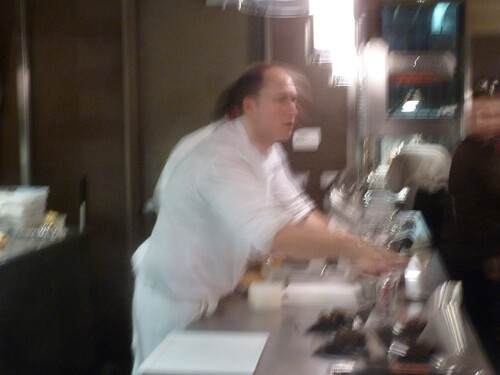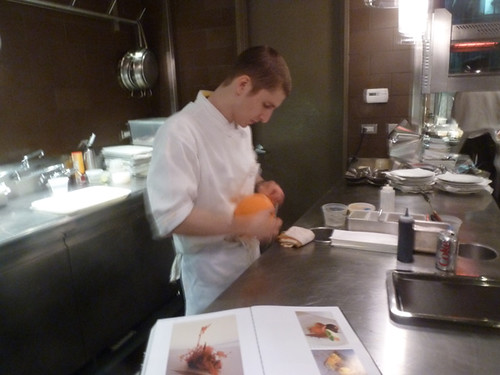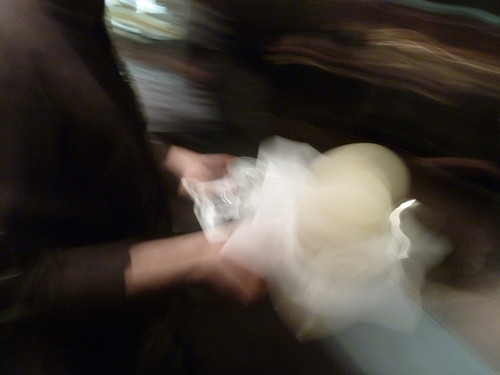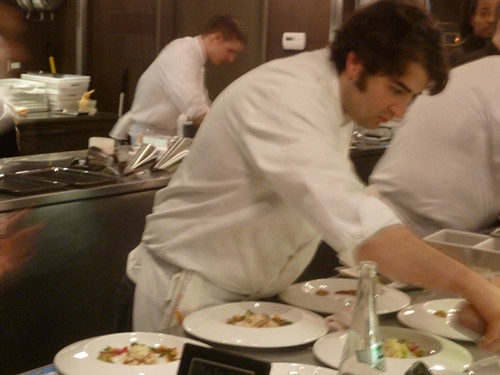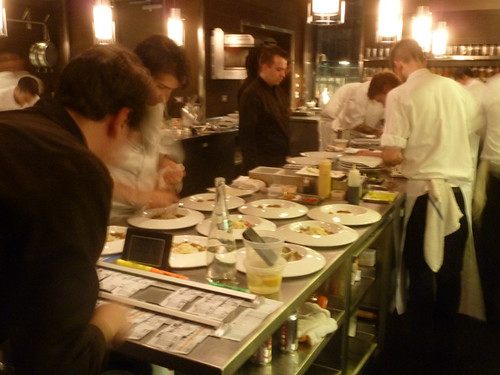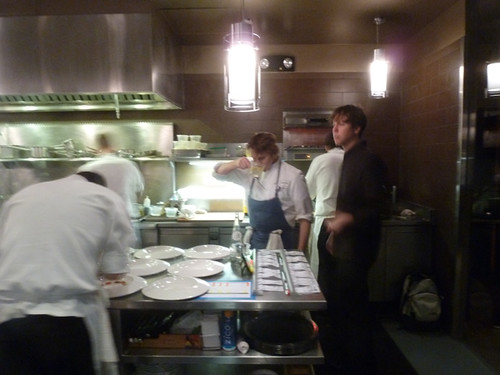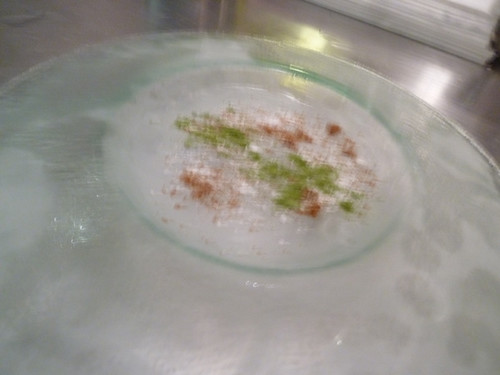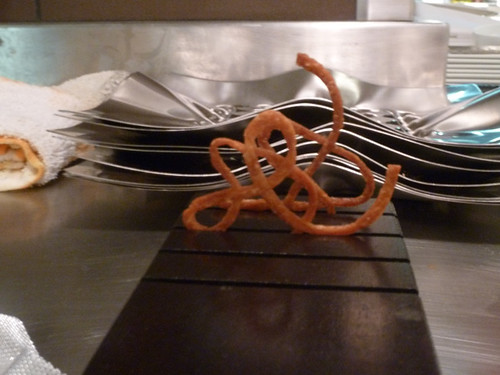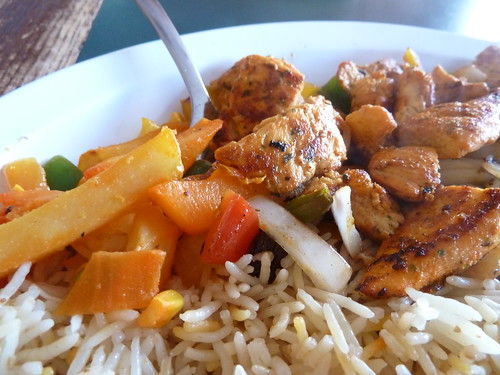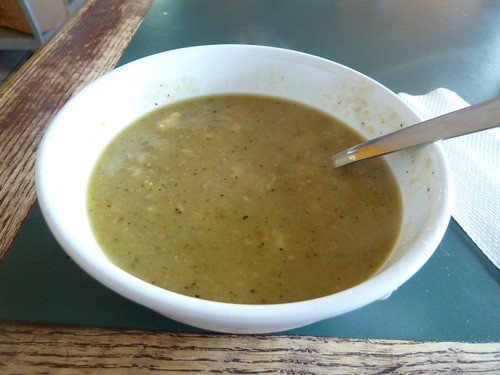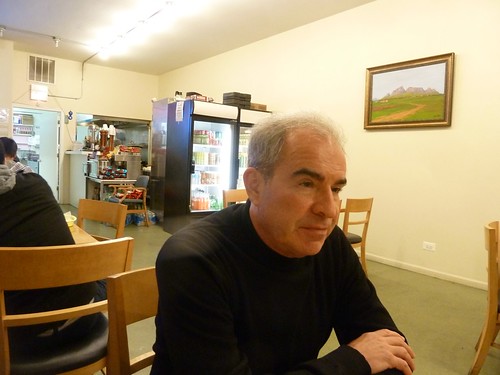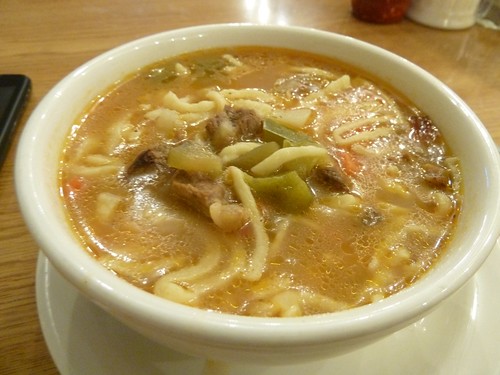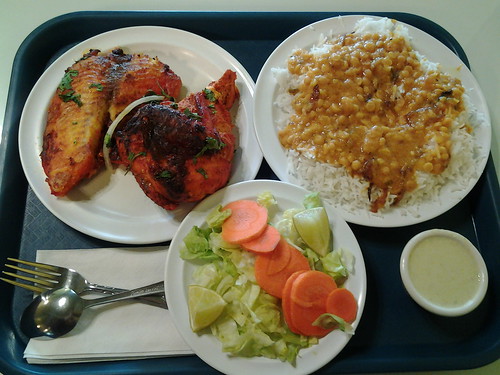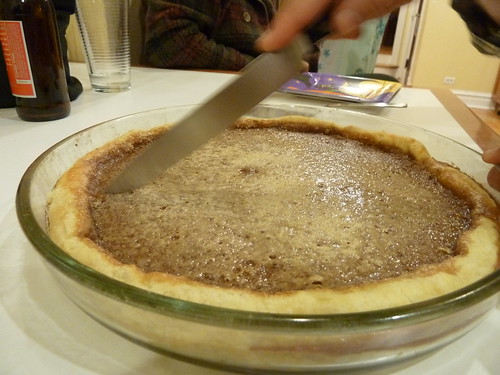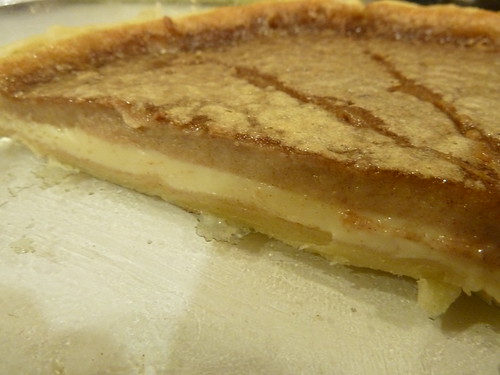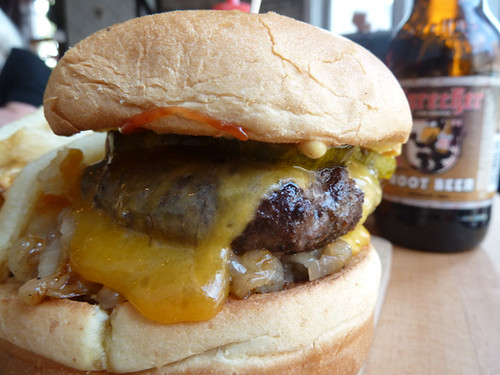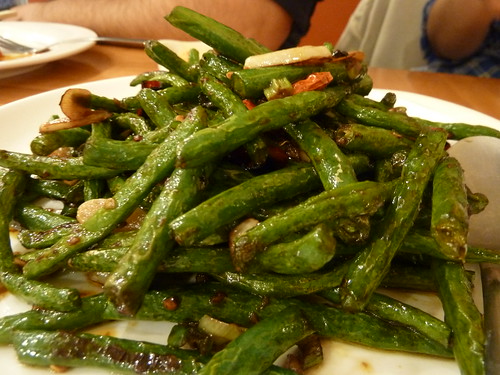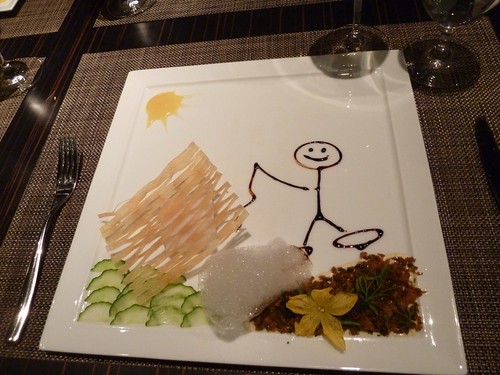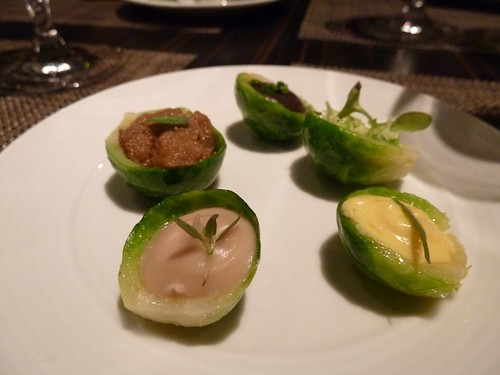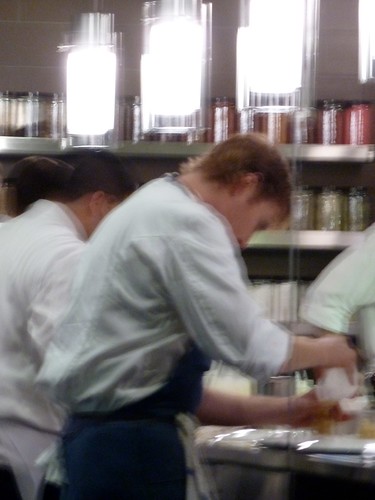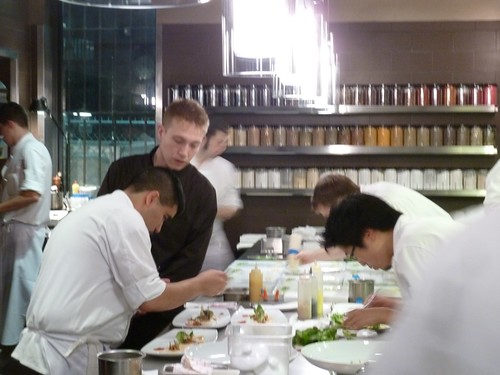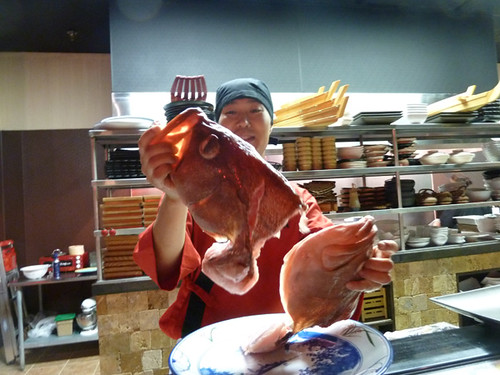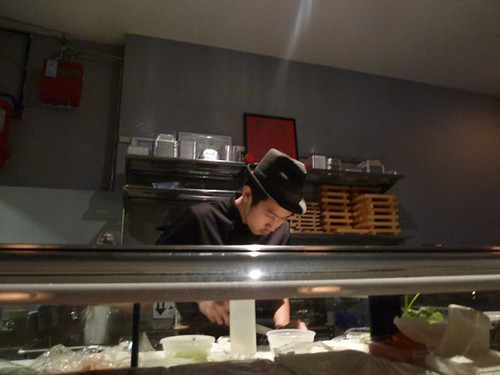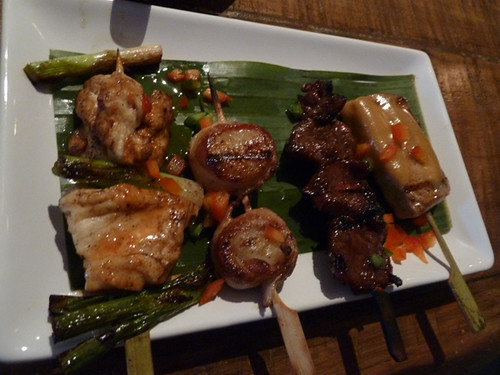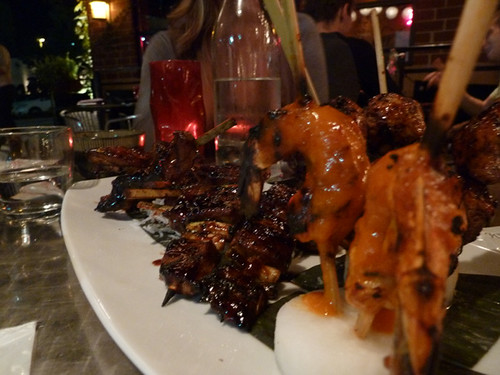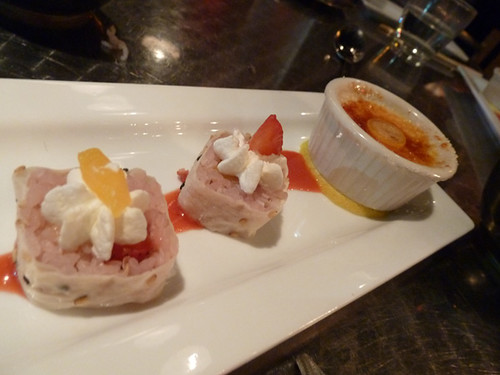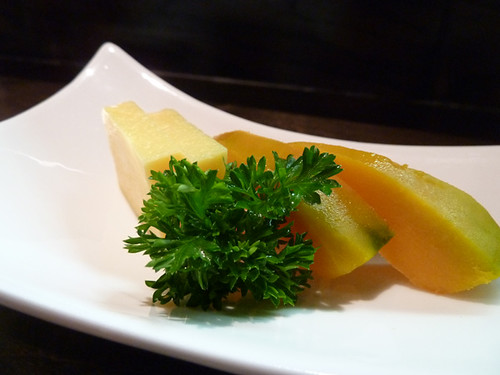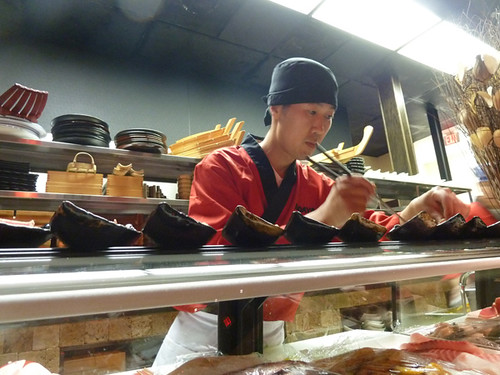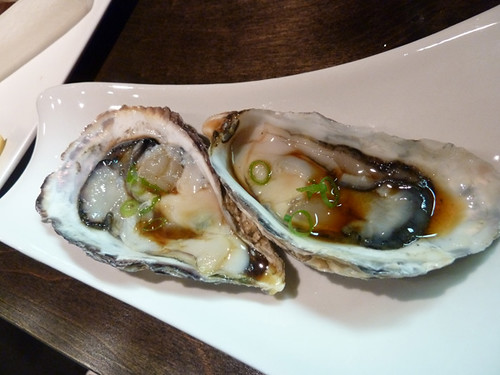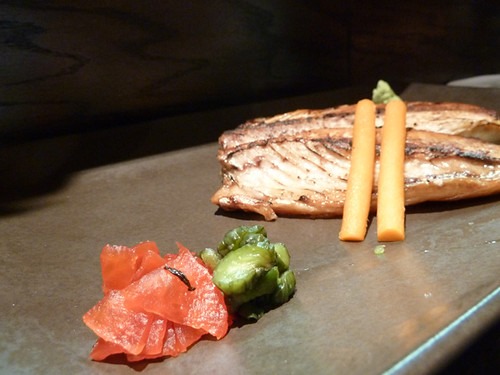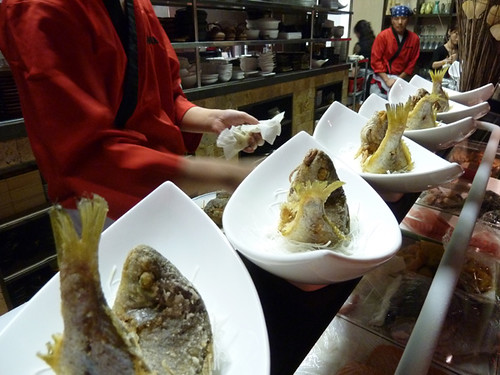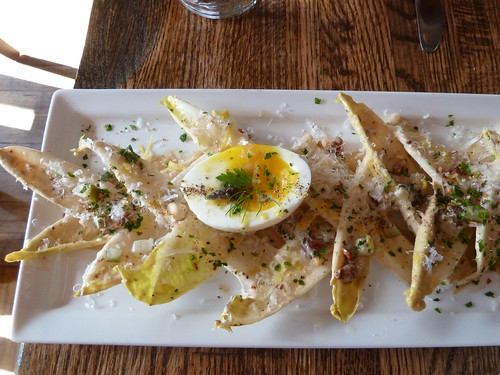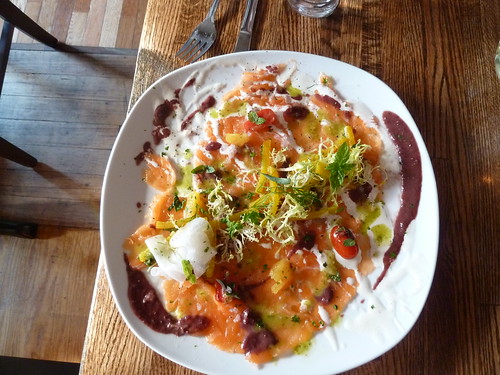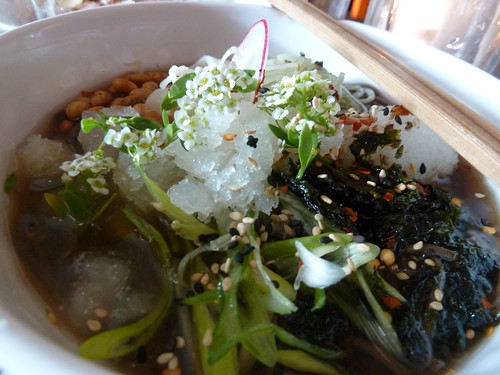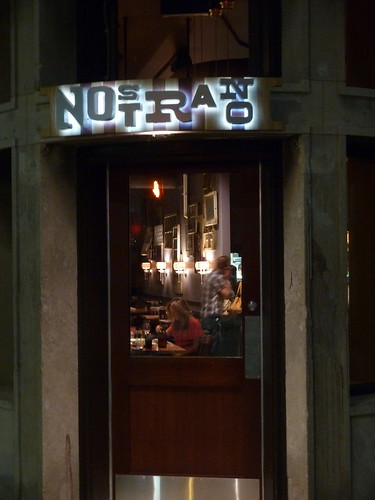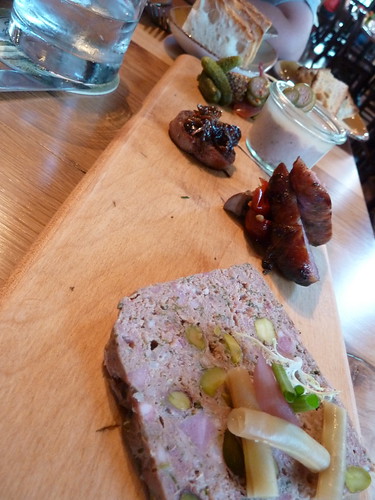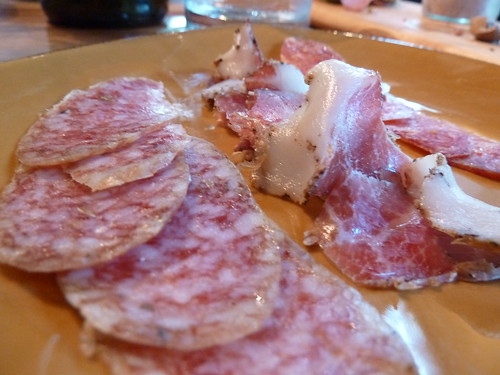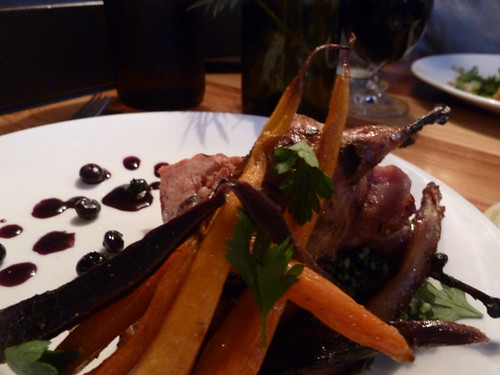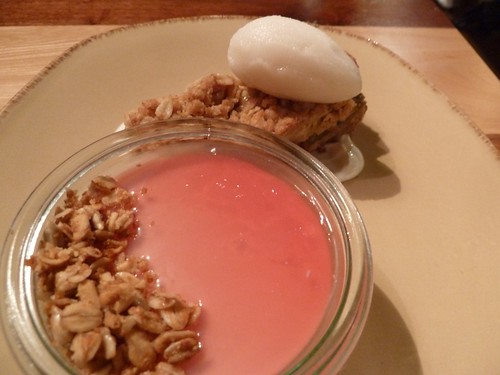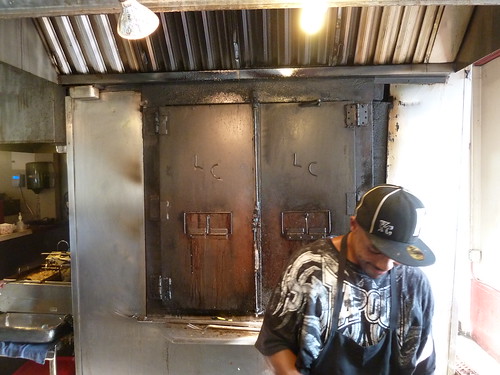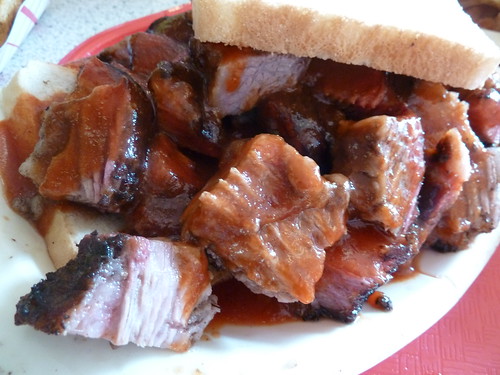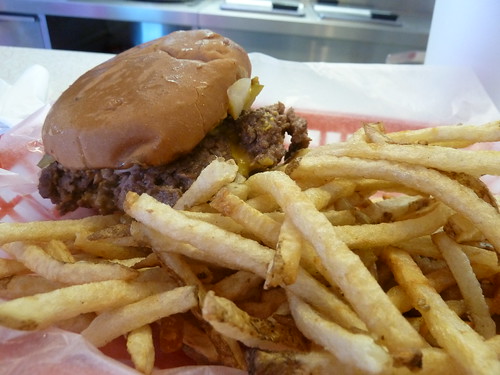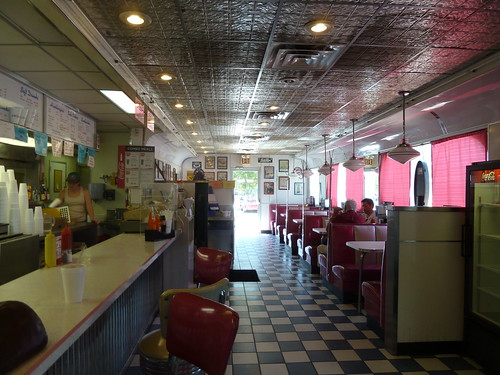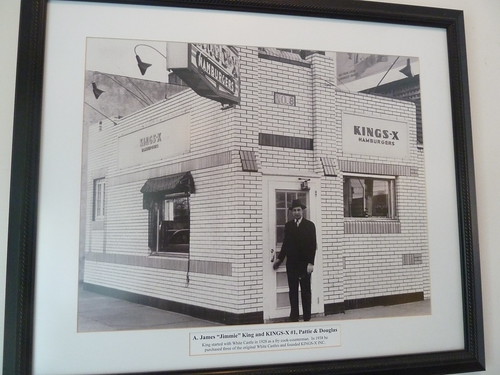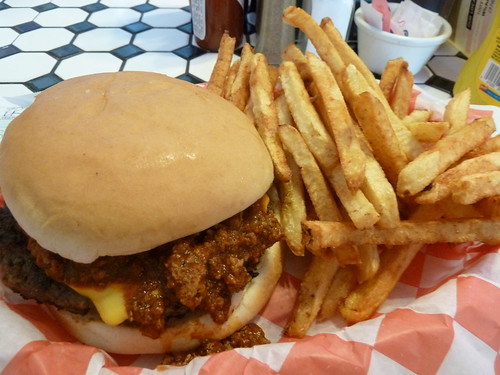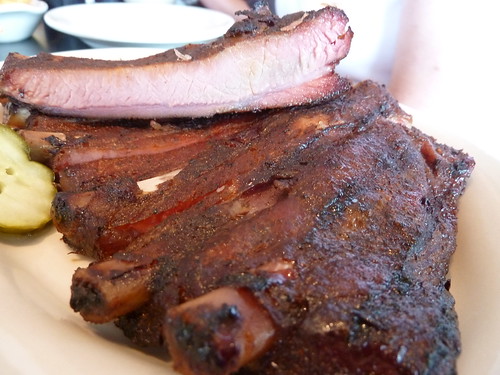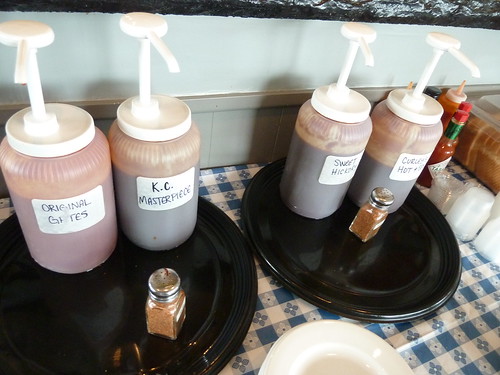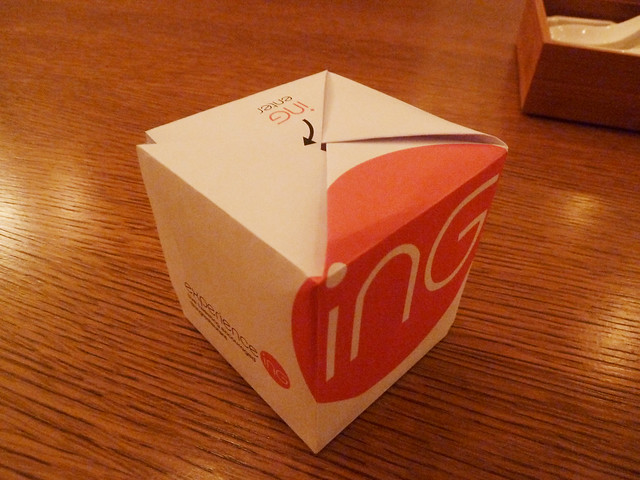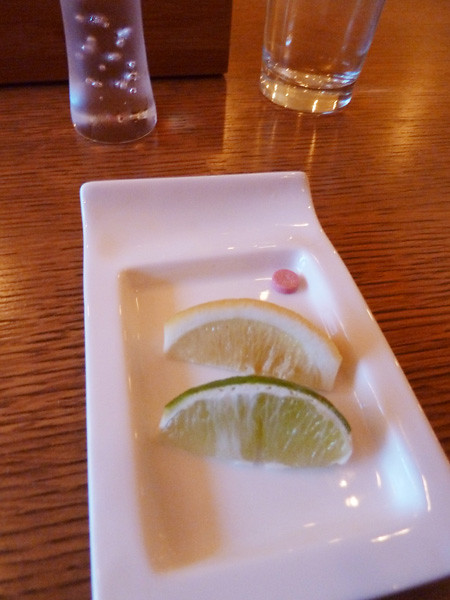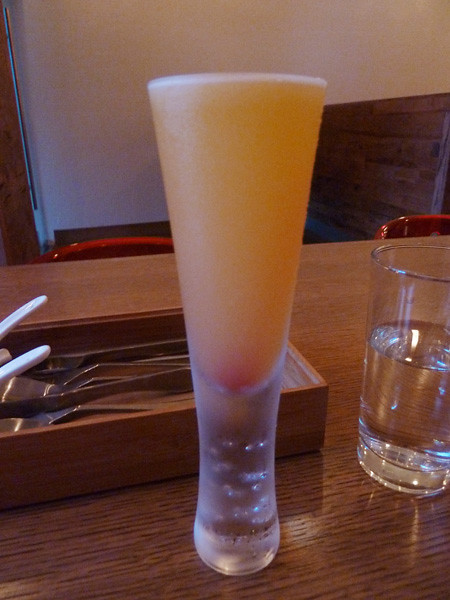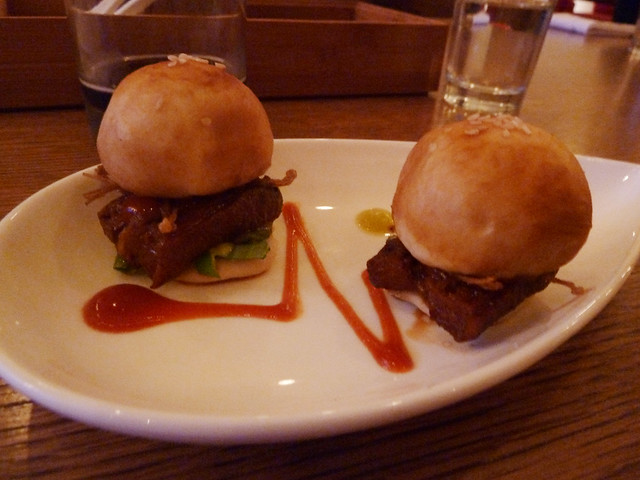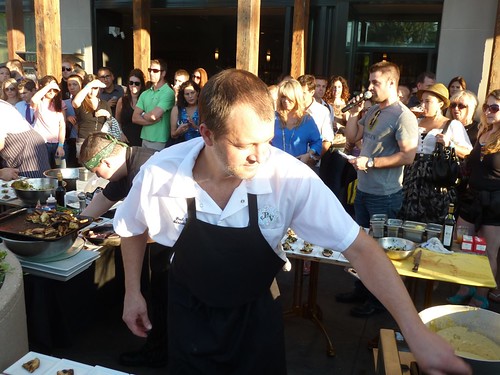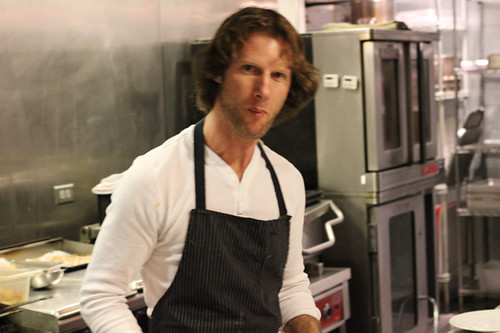
The first time I subbed for Nick Kindelsperger on Grub Street he was going through the things I needed to do the job without screwing it up, and one thing he said was “There are certain chefs who we pretty much cover anything they do.” The list was obvious enough, of chefs who were good at being endlessly interesting— Achatz, Bayless, Bowles, Izard, a couple others… and Phillip Foss.
My first thought was, one of these things is not like the others… everyone else had quite a track record by that point, but Foss was still relatively new on the scene (this was two years ago), and his food at Lockwood, though generally liked, had not catapulted him into the stratosphere of food gods per se. I had eaten at Lockwood (and then had a tangle with him online about a sloppy review written after a state of exhaustion/inebriation, quickly patched up), and it was a nice solid meal but still, you know, colored within hotel lines a bit. I wasn’t convinced he was a great chef (by any somewhat stringent definition of the term) but a good chef who was news because… he was good at making news. Asian carp. Fights with the Hilton over union slackers. Lascivious blog posts. I forget it all now, but he was brilliant at doing something fun— daring, a little naughty, delivered with a wink— that made him easy to like and fun to talk about, and made the whole scene a little more enjoyable.
So I did Grub Street for a week, wrote a small item one day about a guest stint he was doing on the Gaztro-Wagon, pre-wrote the last of my posts for Friday afternoon and scheduled them in the system, packed the car for this trip, and started driving to the east coast.
And right as we were getting on the highway, Phillip Foss was being fired by the Hilton for making a pot joke on Twitter. He had made the biggest news of my week at Grub Street, and I missed it.

If you’re reading this you surely know what has followed— first, veering downscale as the food truck pioneer of Meatyballs Mobile, then veering back very high end with EL Ideas, which was like a storefront theater version of Alinea, performed in the small sort of office space at the front of his Meatyballs prep kitchen down on an industrial nowhere stretch of the south side. I wished him well, I was as happy to feed him a little publicity as he was to get some by being the guinea pig for the test video for Key Ingredient (we shot his first, then worked it into the sequence when his friend John Des Rosiers said he’d have picked him anyway). But I wasn’t entirely sure I wanted to spend my own big bucks, Blackbird or Schwa-level if not Alinea-level bucks, for Phillip Foss’s Hey Kids, Let’s Put On A Tasting Menu— versus other places I might spend it on. Talking with others, I gathered that this was not an uncommon opinion (and later, talking with him, I gathered that this is a problem he’s had with some local critics, too— not being sure his restaurant is real enough and serious enough to be worth the investment, of time or money). Anyway, he finally wanted to treat me (disclosure) when things got a little slower in February (and Andrew Brochu, who’d been cooking with him for some months, was leaving for Graham Elliot), so I went with a group of friends on a recent Friday night.

Let me cut to the chase and say that you have nothing to fear and a lot to anticipate excitedly from EL Ideas. If it’s not a “real” restaurant, then too bad for real restaurants, because in so many ways it’s a warm and engaging experience like fine dining has often forgotten to be. I didn’t entirely buy Foss’s line of patter about the setup overlooking the kitchen space being cozier and more welcoming and erasing the barriers between the chefs and the diners, but that was, in fact, pretty much exactly what it was, and what it did; even if you don’t leave your seat and wander into the kitchen while they’re working, you have no more distance from the chefs, physically and otherwise, than you do from a friend throwing a barbecue in his backyard.
And the food, if nothing jumps out for sheer exoticism and palate-jarring novelty, is smoothly excellent, always interesting, cultivated and maybe most of all, mature. The first course, above, is called shima ajii, consisting of tuna and grated smoked bonito over tapioca— a combination that sounds like it could be hideous, frankly, like smoked chubs in cottage cheese. But it’s not— it’s creamy and smokily subtle and complex. A deconstructed caesar— who hasn’t deconstructed a caesar by now? Yet instead of being a puzzle of disconnected blocks, it was more like caesar reconstruction, putting its flavors back together out of different textures, one or two at a time.
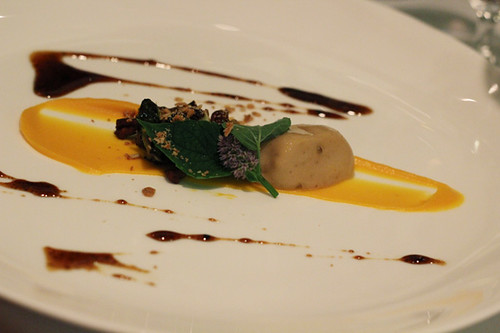
Not everything worked— buttery snails seemed beached on a dry plate of maltodextrin powder and raw cauliflower— but especially in the second half, things went from one to the next confidently and satisfyingly. Foie gras was sharpened to a point by a dash of mustard and citrusy marmalade, buddha’s hand. Fried sweetbreads and a spiral of apple added crunch and a little earthiness to lobster. Maybe the most interesting (and one that’s gotten him some attention) was called Anise Hyssop (shown above)— the one all-vegetable dish, with a root beer sauce on the plate (another thing far better than it sounds). With everything else dominated by the nature of its protein, this one was free to go somewhere unexpected, and I’d love to see him do more freeform vegetable dishes like it. Dinner came to a conclusion, finally, with a grownup take on a s’more, simple and surprisingly dignified.

The dishes flowed so harmoniously from one to the next that you might think that one mind was behind them all, but in fact each of the three chefs in the kitchen— Foss, Kevin McMullen (who also works on Crux dinners with Brandon Baltzley) and Michael DiStefano— came out and introduced the dishes they’d conceived, and between courses we occasionally wandered into the kitchen to take pictures or chat the chefs up. For all that they’re working with far fewer people than a 15-course meal normally takes, there was almost no stress in the kitchen, which was fairly remarkable, and no point where the schedule of dishes fell apart, either, which is more remarkable still.
I try a lot of upscale restaurants where I think “that was nice, done that now,” and a smaller number where I think “I want to get back and try more things” (Vera and Telegraph are the two I think of like that), but the rarest are the ones where I think I want to go back and take someone to a place, just to enjoy their enjoyment of it. There’s no place with the feel of EL Ideas, in which genially inventive food joins with a warmly welcoming and relaxed atmosphere carved out of what ought to be an impersonal, crammed-in space, and it’s a unique Chicago thing to which I would take any out of town visitor— or any critic afraid of such improvisatory dining and the perils of the near south side.



 Posted in
Posted in 

